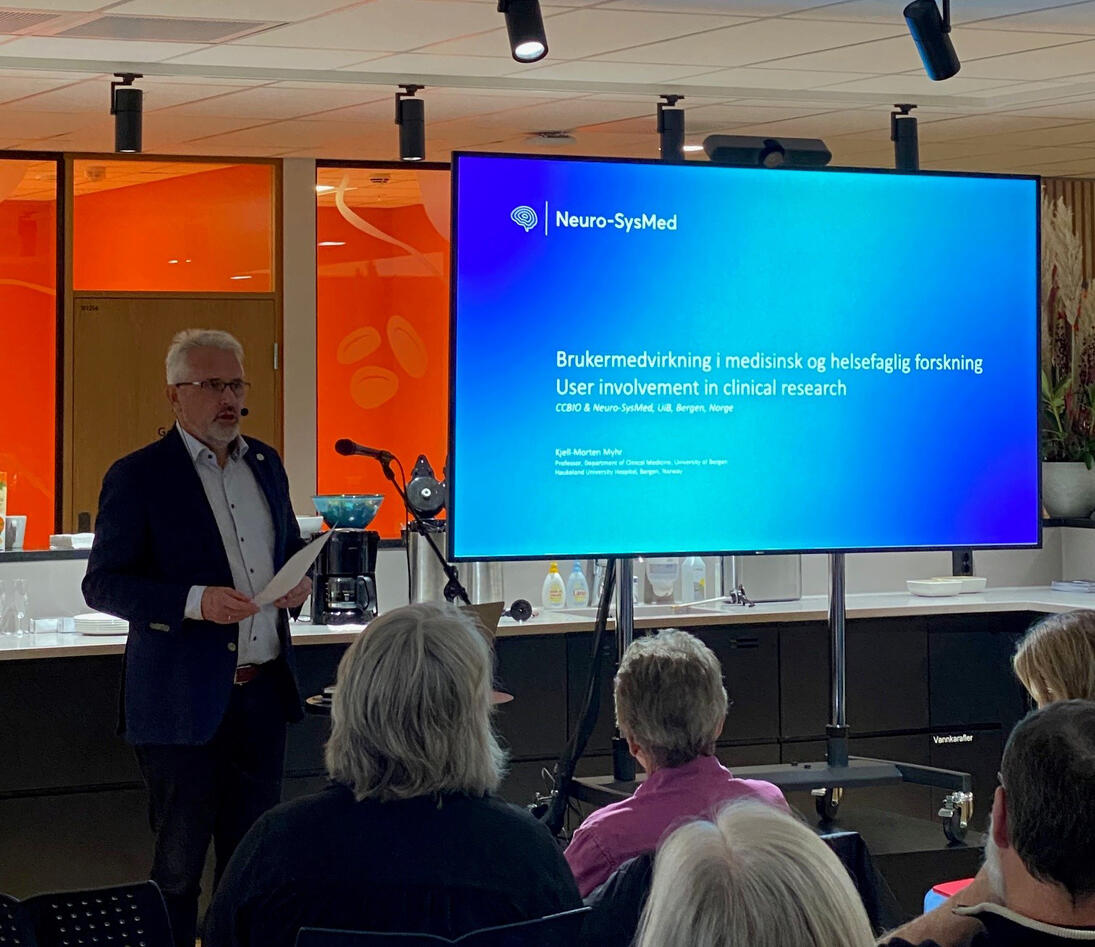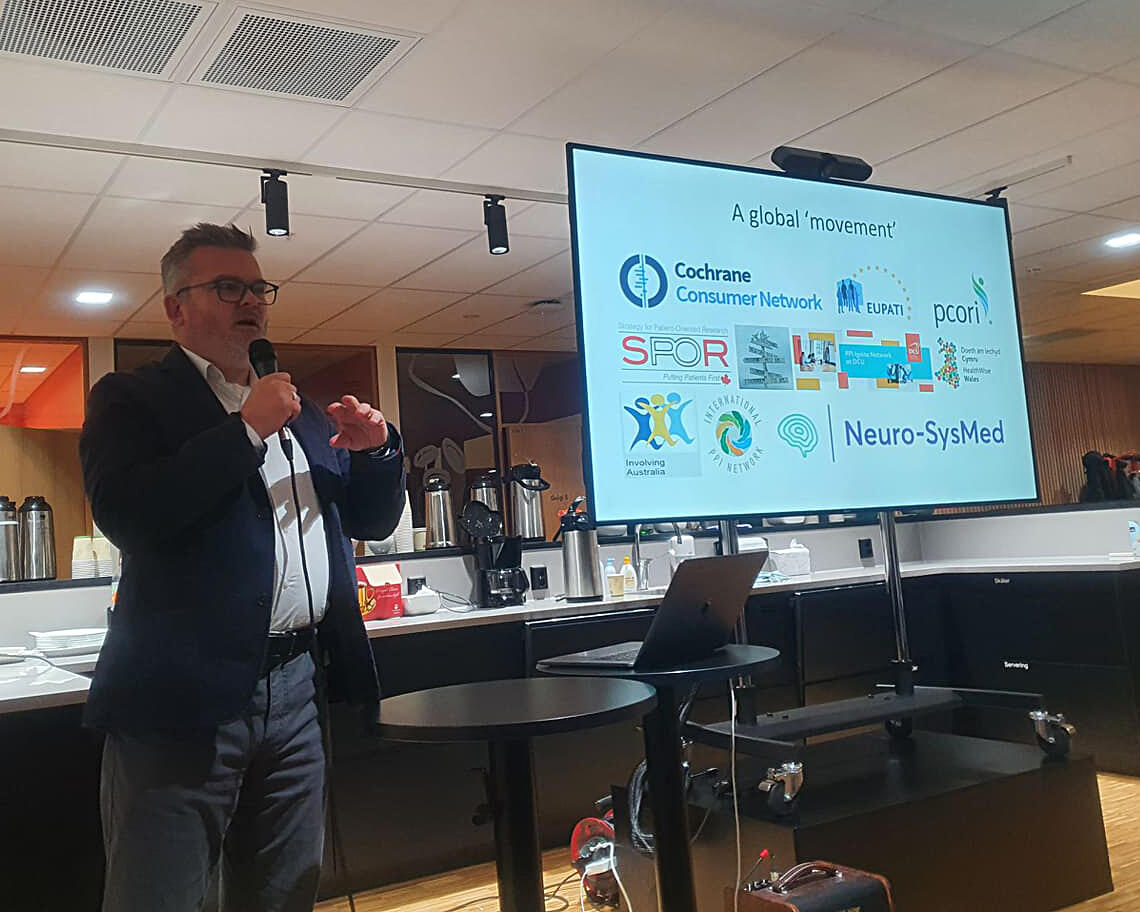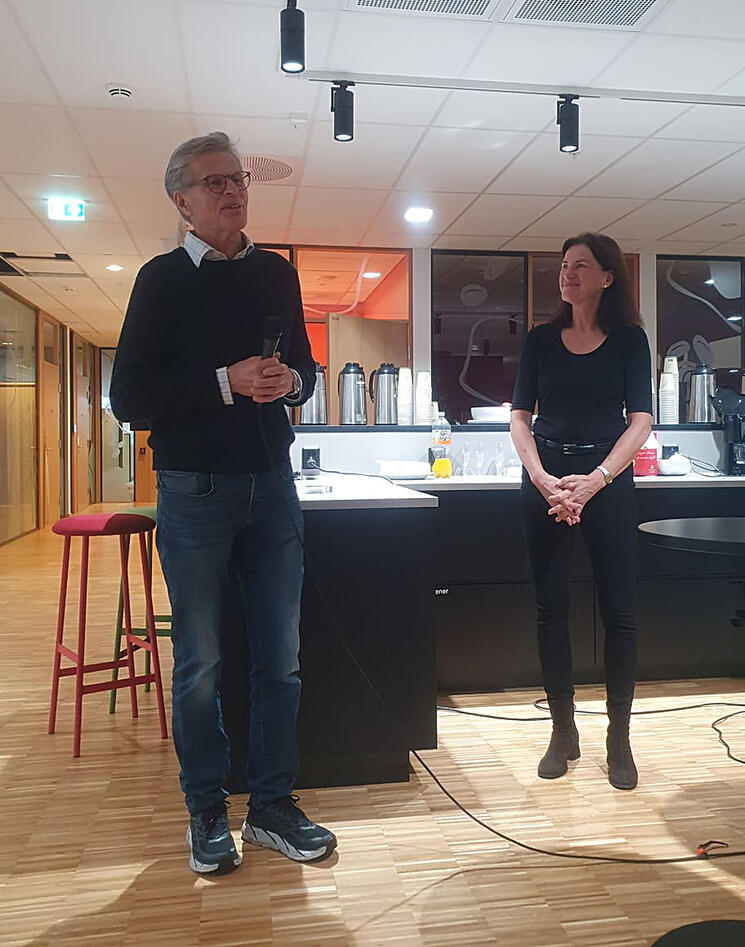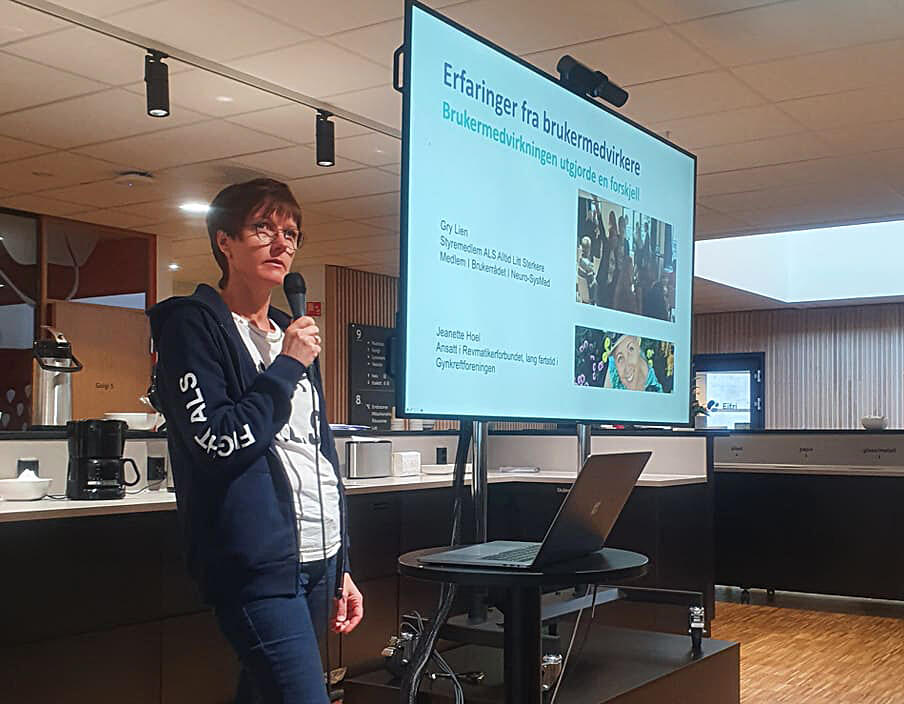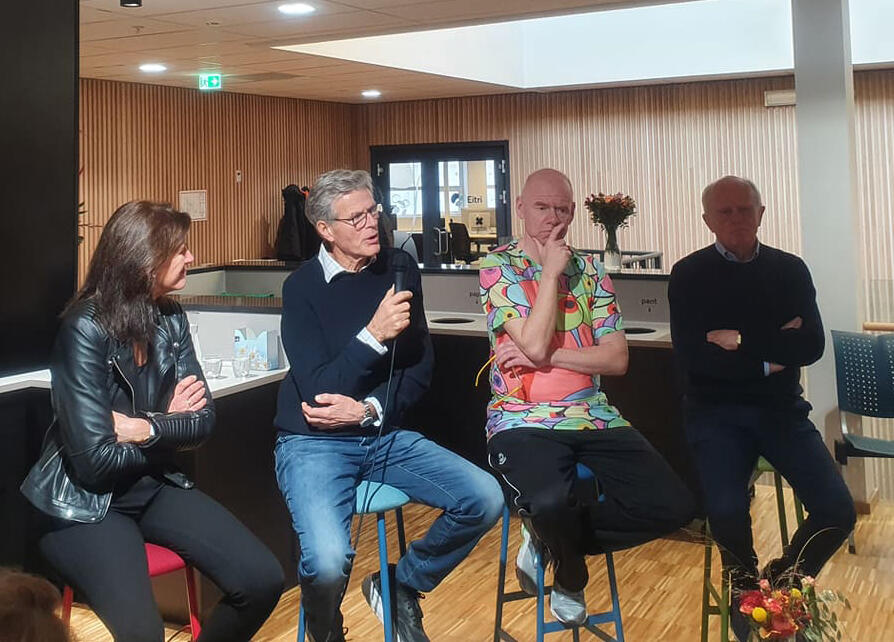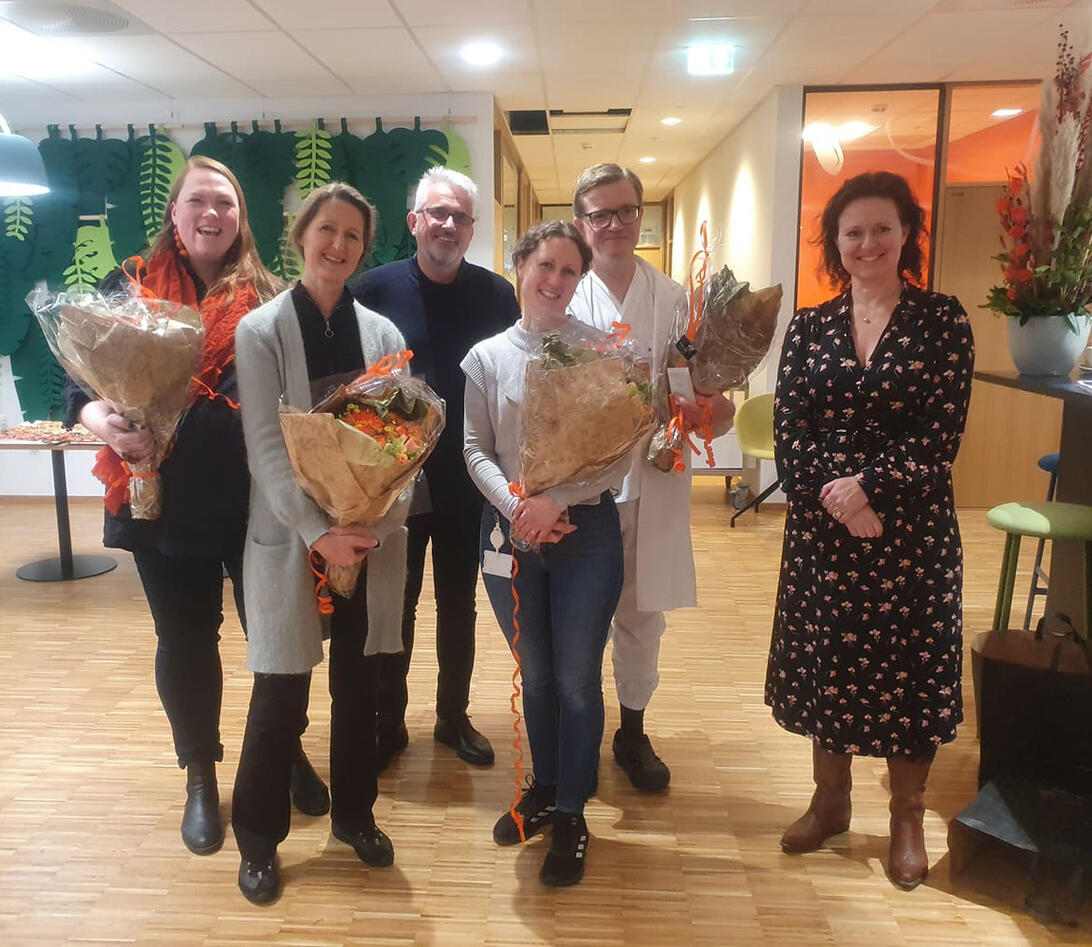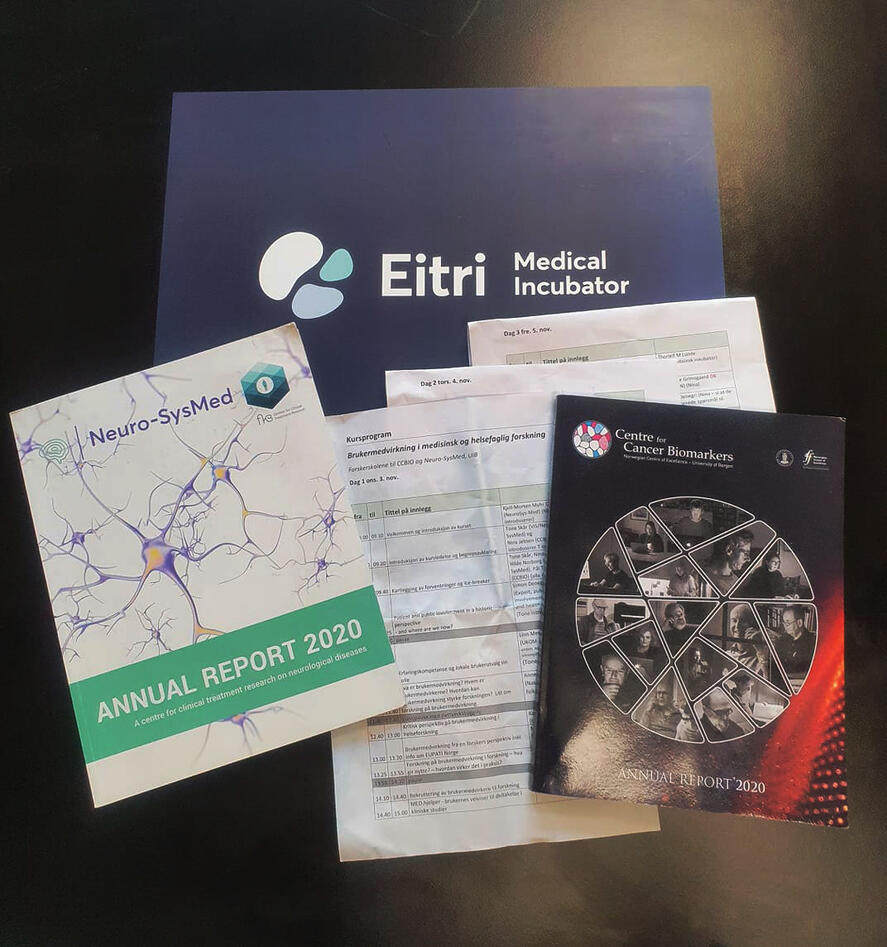Bringing the patient perspective into research
During November 3-5, 2021, a brand-new and unique course in Patient and Public Involvement in Medical and Health Research was accommodated at the state-of-the-art premises of Eitri Medical Incubator - a perfect frame for an innovative course involving both Research School students as well as user representatives.

Main content
Learning from the patient experience
The course is a collaboration between Neuro-SysMed and the Centre for Cancer Biomarkers CCBIO, initiated by Neuro-SysMed in line with their strong focus on patient participation. The course aims at creating a platform for competence development and networking across professional- and user roles, facilitating communication and sharing of experience from multiple perspectives. Furthermore, the course intends to stimulate increased user participation in research trials by presenting methods for putting user involvement into practice. The main objective of the course is to develop the participants’ capacity to assess and convey the value of patient and public involvement in general, as well as promoting productive user involvement in participants’ research projects.
“User involvement has become increasingly embedded in clinical research and presenting a clear strategy for user representation in all steps of research planning, conduct and distribution of results may be the key to obtain crucial funding,” Nina Jebsen from CCBIO says, as one of the academic responsible for the program. “Bringing patient perspectives into the scientific troposphere makes medical research more relevant and efficient, and scientific results more rapidly implemented into medical practice,” she explains. “Equally important is the democratization of the decision making by allocating human and monetary resources into medical research based on input from the recipients of the health care services,” she continues.
Structuring the communication channels
In addition to Nina Jebsen, Tone Skår (Neuro-SysMed and VIS) was academic responsible for the program, with vital support from Simon Denegri, UK nestor and expert in public involvement in biomedical and health research affiliated with Neuro-SysMed.
“Who but patients and their closest relatives can better identify knowledge gaps and unmet needs?” Tone Skår asks. “Although patient and public involvement has been commissioned by the health authorities and is mandatory in applications for funding from public stakeholders, both researchers and users are often uncertain about how to practically carry out user involvement during research preparation and performance. Furthermore, the communication channels and networking between user representatives and researchers lack structure and consistency,” Skår explains.
User participation also in the course planning
The organizers involved the User Council of Neuro-SysMed in the first round of planning, as well as a variety of patient organizations, to provide feedback on the planned program and activities. The patient organizations were also encouraged to use this opportunity to train new and upcoming patient representatives who would like to contribute to research.
Program with insights from patient organizations and researchers
The course spanned over three days and encompassed a broad spectrum of national and international lectures from researcher and user organizations, professionalized users and health care employees assigned to specific user representation tasks. Challenges were addressed from both researcher- and user representative perspectives, and specific advice as well as professional and personal opinions were shared. The atmosphere during the course reflected open-mindedness and an overall pragmatic attitude to find common denominators and move forward in the heterogeneous meadow of user representation in medical research. See the complete program here.
The organizers budgeted for 14 patient representatives, but to their surprise, far more patient and career representatives wanted to attend the course. Representatives from a variety of organizations were present: the Neuro-SysMed User Council, the National Association for Public Health (dementia), the ALS association Alltid Litt Sterkere, the Norwegian Parkinson Society, the Bergen MS Association, the Norwegian Cancer Society, the Blood Cancer Association, the Gynecologic Cancer Association, the Bladder Cancer Association, Sarkomer, Sarkomer Vest, the Swedish Brain Cancer Society, the National Association for Lung and Heart Diseases (LHL), dept. Bergen, LHL Hjerneslag Ung Hordaland, the Rheumatic Association, the Norwegian Spondyloarthritis Society, EUPATI Norway, the User Panel in Alrek Health Cluster (Teeth and Health, the experience panel for mental health and drugs in Helse Bergen).
In a special Q&A session, the course participants were eager to unravel more facets of Simon Denegri’s unique experience. A panel debate elucidating ethical, personal, and psychological implications of exposing user representatives to high expectations from research environments, provided a new dimension to the topic. Group sessions included both pre-arranged case discussions as well as each research school participants bringing forward their own project for scrutiny, discussion, and advice from user representatives. Finally – the researchers presented the highlights from these group sessions in plenary sessions, also revealing custom-made take-home messages from the user representatives.
Open invitation from the patient organizations
Tone Skår sees this event as a unique experience. “There were so many wonderful interactions and such a great atmosphere – people met with mutual respect and curiosity,” she reports. “We aimed at facilitating a feeling of openness and common ground, and it seems to have worked, as I witnessed so much open sharing of experience, knowledge and inspiration,” she says.
The course teaches that user participation must start early and be budgeted for. Tone Skår emphasizes a particularly inspirational moment when three Research School students bravely explained in plenum how they struggled to plan for user involvement before they even knew whether their research would be funded. At that point, the representative from the Blood Cancer Association stood up, soon followed by other patient organizations, and heartfeltly invited the researchers and students to reach out to them, as they would be more than happy to assist in the initial phase – and then, if the funding would come, they could compensate from then on!
Aim for true user participation
Tone Skår also sees this course as a culmination of the work with the MED.hjelper project she contributed to in collaboration with Neuro-SysMed, as very many of the collaboration partners in that project, now took the floor as lecturers – medical professionals as well as user representatives. “I was deeply touched to see the power and desire within people to make a difference for others,” Skår explains. “In the pre-project for MED.hjelper, many asked us for a chance to contribute towards a common goal for true user participation, and that is exactly what this course is laying the groundwork for,” she concludes.
Huge logistic undertaking
Nina Jebsen is very grateful to the coordinators. “Course coordinators and PhD-students Hilde Norborg (Neuro-SysMed) and Pål Tore Bentsen (CCBIO) did a formidable job to inform, update and take care of user representatives and researchers, respectively, before and during the course,” she says. “In addition, medical student Amalie Tegnander in the Medical Student Research Program provided valuable logistic support, and Master student Eirin Skoglie Aarem assisted the first day. Research School leaders Nina A. Grytten Torkildsen (Neuro-SysMed) and Elisabeth Wik (CCBIO) were super instructive and supportive all the way during planning and implementation. Likewise, UiB Senior Executive Officer Kjetil Harkestad was instrumental for keeping overview of a very heterogeneous group of participants. Last, but not least, head of Neuro-SysMed, Professor Kjell-Morten Myhr kick-started the course by underscoring the strong user involvement profile of the research center,” Jebsen concludes.
Pål Tore Bentsen would encourage other PhD students to take on coordinator roles. “Being co-coordinator for CCBIONEUR910 has all in all been interesting, rewarding, and enjoyable, not least because of a positive and solution-oriented course management,” he says. “In this case, it has been extra rewarding to get to contribute in the establishing of a new course in a contemporary topic which is continuously changing and developing. The collaboration and distribution of responsibilities in the course committee worked very well, and the general workload has been manageable as we have been two coordinators,” Bentsen concludes.
Three collaboration courses this fall
The organizers hope to arrange the second CCBIONeur910 Patient and Public Involvement in Medical and health Research during autumn 2022.
Neuro-SysMed and CCBIO collaborated on three PhD level courses this fall, the other two being CCBIONeur912 Health Innovation, and CCBIONeur911 Clinical Trials. Read an article on the execution of the other courses on this link.
